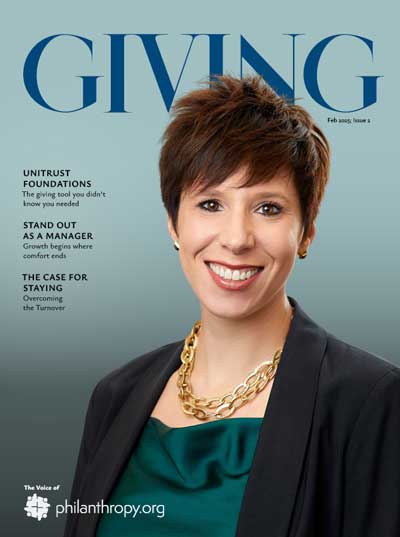Understand the benefits and increase your value to donors.
You may have heard it called a “charitable IRA rollover,” but this is a misnomer. Yes, there is a distribution from a traditional IRA, and yes, the account holder does not pay tax on that distribution. But the distribution is outright to a public charity, not to another IRA.
The correct terminology, which is finally beginning to catch on, is a “qualified charitable distribution,” or QCD.
And the mechanics are straightforward.
How It Works
If your donor is age 70-1/2 or older, she can transfer up to $100k per year from a traditional IRA to a public charity. The dollar figure is indexed for inflation. In 2024, the limit is $103k.
Your donor cannot claim an itemized deduction, but the distribution is excluded from her income, whether she itemizes or not. If she is age 73 or older, and is thus required to take minimum distributions (RMDs) from her IRA, the QCD counts toward meeting that requirement.
There are three distinct strategic benefits for your donors who use the IRA QCD.
- People who take the standard deduction receive no benefit from their charitable gift. In effect, they pay taxes on their gifts. The IRA QCD fixes this.
- Generous donors who itemize can reduce their taxable income and might even benefit by switching to the standard deduction.
Making an IRA Qualified Charitable Distribution may reduce the donor’s “provisional income.” Provisional income is the measure used to determine if a recipient of Social Security benefits is required to pay taxes on those benefits, and if so how much. It is calculated by adding up a recipient’s gross income, including tax-exempt interest and half of the Social Security benefits. Up to 85 percent of Social Security benefits may be subject to tax.
Avoiding The Tax Trap
Few people do their tax returns on paper, so they may not understand that the RMDs from their IRAs and other qualified retirement plans can expose larger and larger portions of their Social Security benefits to income tax. Effectively, your RMDs may cause a double taxation effect. Someone in a 22% tax bracket may pay as much as 40.7 % in tax because their RMDs are increasing the taxable portion of their Social Security benefits.
As a development professional, you can suggest that donors ask their tax advisors how charitable gifts may improve their income tax burden.
But what if the donor has a 401(k), 403(b), or Keogh plan instead of a traditional IRA? You can suggest your donors consult their financial advisors about creating a new IRA as a vehicle for charitable giving. Then they can transfer their desired gifting amount into the new IRA and use this account to make QCDs.
In a future post I will explain the incredible benefits of the IRA rollover for higher income families—entirely different, but equally important.



